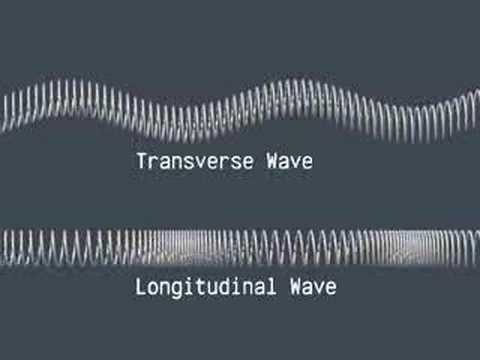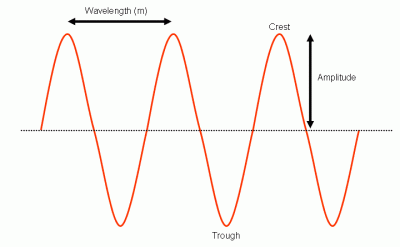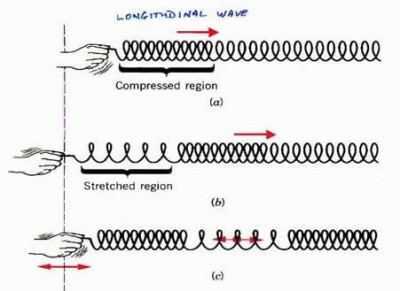Difference Between Transverse and Longitudinal Waves

Transmission of energy is possible in a number of different ways, with ways being one of the medium. Energy transmitting waves are not seen by naked eye but of course their effects can be felt. There might be a need of a medium for waves to travel. Mechanical waves are the ones which require a medium to transmit energy from one point to another. Therefore, mechanical waves cannot travel in a vacuum. The speed of such mechanical waves depends upon the elasticity internal properties of the medium it is using to travel. Mechanical waves are divided into two main types, transverse waves and longitudinal waves. These two types are often confused to be one but you must distinguish between them.
Mechanical waves travel by the movement and oscillation of particles of the medium it is passing through. Transverse waves consist of oscillation of medium particles perpendicular to the direction of the wave itself. Assuming a transverse wave is moving along the x-axis, the move of the medium particles will be in the y-z plane. Light is the perfect example of transverse wave.
Longitudinal waves are quite to opposite to transverse waves, as the movement of the particles is in the same direction as the path of the wave itself. These waves travel when the particles of the medium compress and expand at different points simultaneously and that is why they are also called compression waves.
Instructions
-
1
Transverse Waves
The particles of the medium remain at the equilibrium position unless a transverse waves passing through them make them move in the perpendicular direction. It is this perpendicular motion of particles which give the conventional parabolic shape to transverse waves. Always remember that transverse waves can only occur in solids and not in gasses or liquids. These type of waves require the particles of the medium to be very closely packed together, favouring the solids, so that a pushing force can be exerted on the neighbouring particles.
Image Courtesy: livingscience.co.uk
-
2
Longitudinal Waves
The expansion and compression in a particular medium produces longitudinal waves. These waves are not parabolic and consist of compressions and rarefactions, instead of crests and troughs. Particles of the medium actually transfer energy to the one next to them and hence, the energy is transmitted from one point to another. These mechanical waves travel in the same direction as the wave itself does. Longitudinal waves can travel through solids, liquids and even gasses easily, unlike transverse waves.
Image Courtesy: rpdp.net







